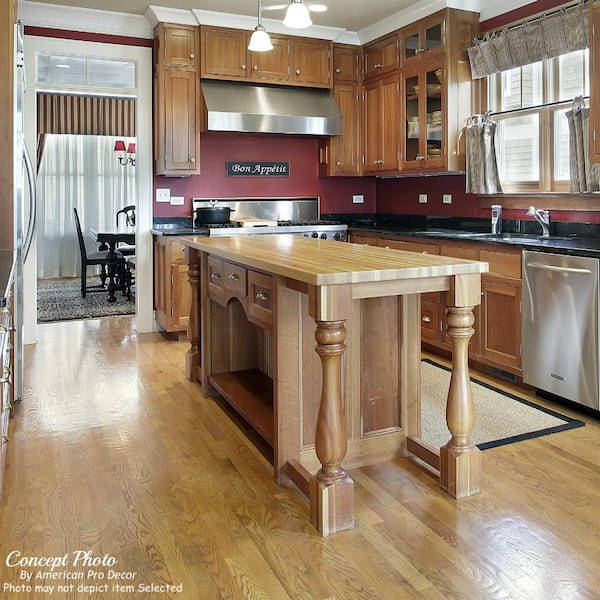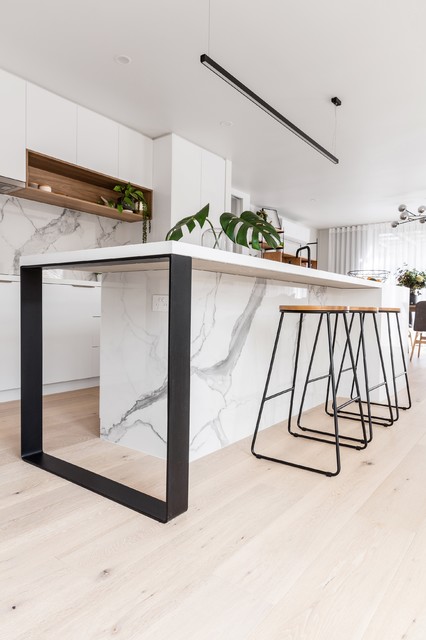Necessary Tips for Choosing the Perfect Kitchen Island Leg for Your Home
Wiki Article
The Significance of a Sturdy Cooking Area Island Leg in Developing a Functional Cooking Area
A strong cooking area island leg serves as a fundamental element in developing a useful food preparation environment, offering needed assistance for both the countertop and different cooking area tasks. The stability it uses can significantly minimize the threat of accidents in high-traffic areas, while additionally adding to the general visual comprehensibility of the space. As cooking areas progress into multifunctional areas for food preparation, eating, and interacting socially, the choice of products and layout factors to consider for island legs becomes significantly crucial. Understanding these aspects can change your cooking area right into a safer and a lot more efficient location, triggering additional exploration into the ideal alternatives available.Advantages of Sturdy Island Legs
Offering vital support, tough kitchen area island legs play a critical duty in enhancing the capability and sturdiness of cooking area islands - kitchen island leg. These legs not just birth the weight of the kitchen counter and any type of added products positioned on the island, but likewise add to the general security of the framework. A well-supported kitchen island guarantees that it continues to be upright and practical, even under hefty use, which is specifically essential in active kitchen settingsFurthermore, tough island legs can enhance the visual appeal of the cooking area. They offer a strong structure that can match various design styles, from modern-day to conventional. This flexibility allows homeowners to customize their kitchen area islands according to individual taste while making sure that the architectural integrity remains uncompromised.
In enhancement to their supportive duty, durable cooking area island legs can also enhance safety and security. Ultimately, spending in durable kitchen island legs is necessary for a useful and aesthetically pleasing cooking area.
Materials for Kitchen Island Legs
When picking products for kitchen area island legs, toughness and visual charm are important aspects to think about. One of the most usual products consist of wood, metal, and crafted timber, each offering one-of-a-kind advantages.Wood, such as oak, cherry, or maple, is a traditional option because of its stamina and ageless appeal (kitchen island leg). It can hold up against substantial weight and is immune to wear, making it suitable for high-use kitchen area settings. Furthermore, hardwood can be discolored or painted to enhance different kitchen area styles
Steel legs, usually crafted from stainless-steel or wrought iron, offer a industrial and modern-day appearance. They are unbelievably strong and can support substantial lots while being immune to dampness and warmth, which is useful in a cooking area. Metal legs can also be quickly cleaned up, improving their functionality.

Design Considerations for Stability
The selection of products for kitchen area island legs straight affects the design factors to consider for security. When creating a kitchen area island, it is vital to review the weight-bearing ability of this hyperlink the picked materials. Much heavier products, such as solid wood or steel, commonly offer better stability, particularly under the stress and anxiety of day-to-day usage.Additionally, the leg design must incorporate correct geometry to improve stability. A bigger base increases the support area, reducing the risk of tottering or tipping. Consideration must additionally be provided to the elevation of the legs; disproportionate leg sizes can bring about inequality, jeopardizing the total stability of the island.
Additionally, the circulation of weight across the island is critical. Guaranteeing that the leg placement lines up with the heaviest elements, such as devices and countertops, will certainly better improve stability.
Upkeep Tips for Longevity

Cleaning up is another important facet of upkeep. Depending on the product of the legs-- whether wood, metal, or composite-- appropriate cleaning approaches need to be used. For wood legs, a gentle wipe with a wet towel and a suitable timber cleaner will certainly aid preserve their surface. Steel legs may require a light gloss to prevent corrosion and keep their appeal.
Furthermore, tightening screws and screws routinely can make certain security and prevent wobbling. Take into consideration enhancing the legs with additional braces or sustains to improve longevity if the cooking area island experiences heavy usage. Lastly, try here using a safety finish or sealer can guard versus dampness and stains, extending the life-span of the legs. By complying with these maintenance tips, house owners can guarantee their kitchen island legs stay robust and functional for years to come.
Selecting the Right Leg Style
Routine upkeep guarantees that kitchen area island legs stay durable and useful, but picking the ideal leg style is similarly important for both aesthetic appeals and assistance. The option of leg style can significantly influence the general design and harmony of your kitchen area.why not find out more

Performance is one more vital aspect. Thicker legs or those with a strong base can sustain heavier countertops and devices, boosting the island's utility. Alternatively, slim legs might create an airy look, appropriate for lighter designs but potentially less supportive.
Verdict
In summary, the relevance of strong kitchen area island legs can not be overemphasized in the creation of a useful food preparation location. These legs give necessary support, enhance security, and contribute to the general aesthetic of the kitchen.A strong kitchen island leg serves as an essential element in establishing a functional food preparation setting, offering necessary assistance for both the countertop and various kitchen tasks.Offering important assistance, strong kitchen island legs play a pivotal function in enhancing the capability and sturdiness of kitchen area islands. Inevitably, investing in durable kitchen island legs is important for a functional and aesthetically pleasing cooking area.
Factor to consider needs to additionally be offered to the height of the legs; out of proportion leg sizes can lead to discrepancy, jeopardizing the total stability of the island.
Wood legs offer heat and a traditional look, while metal legs use a commercial and modern-day feel.
Report this wiki page